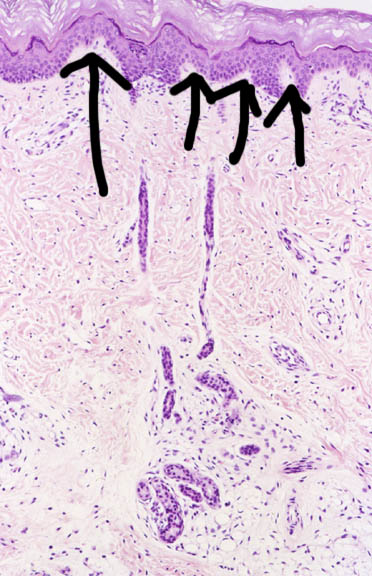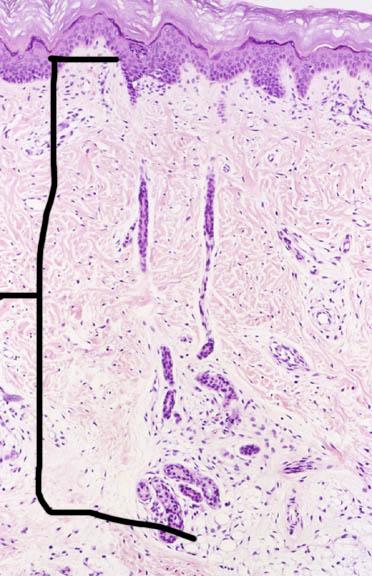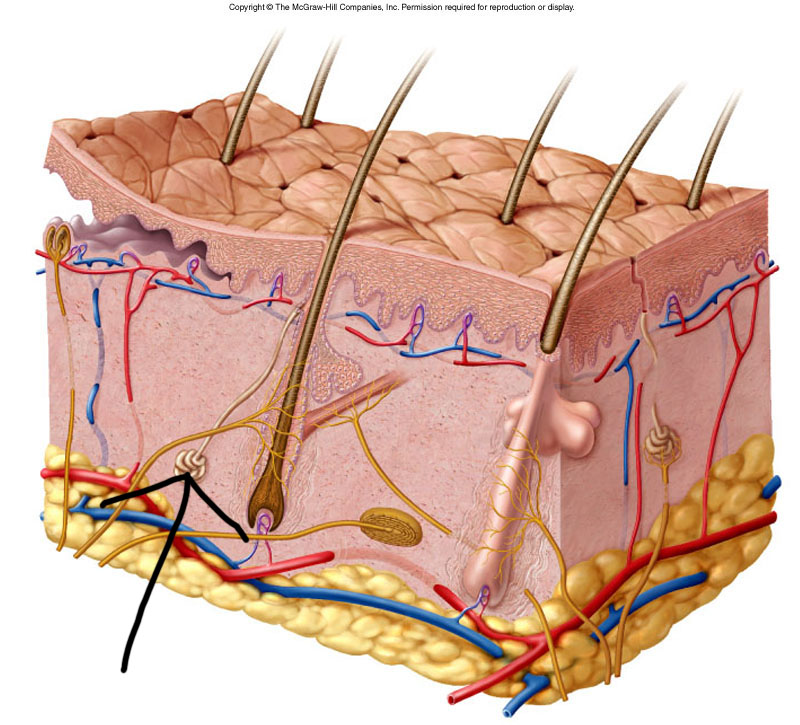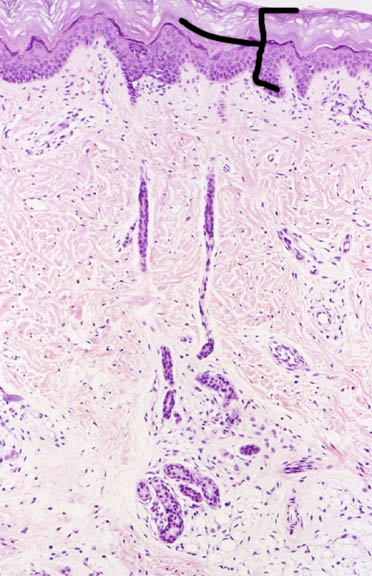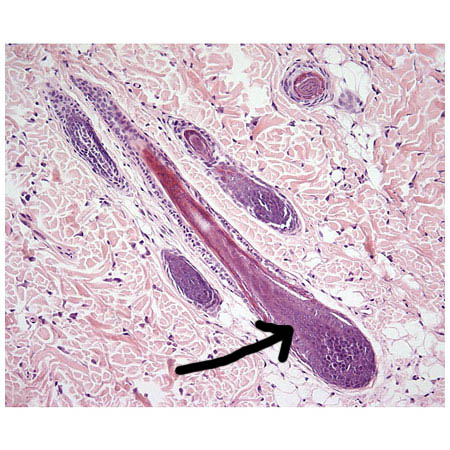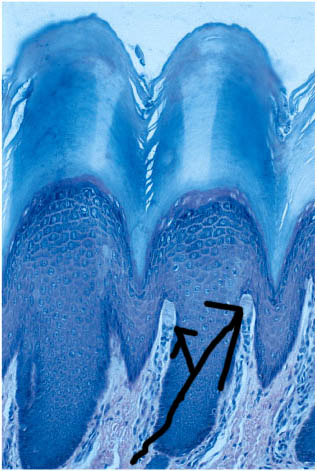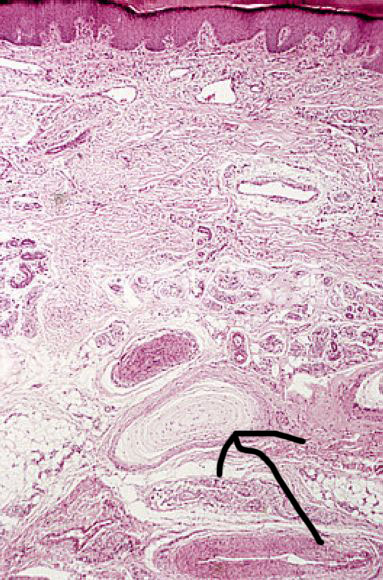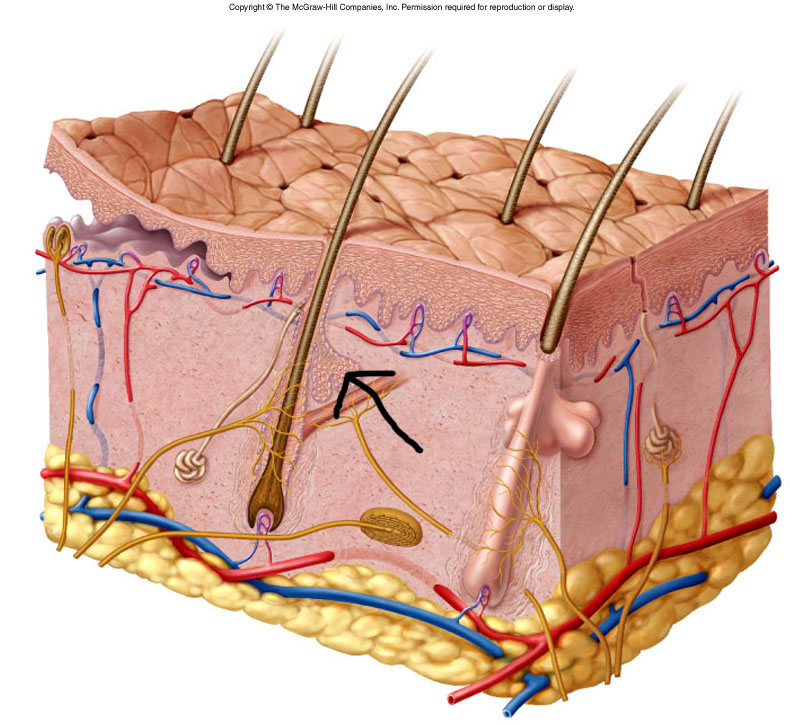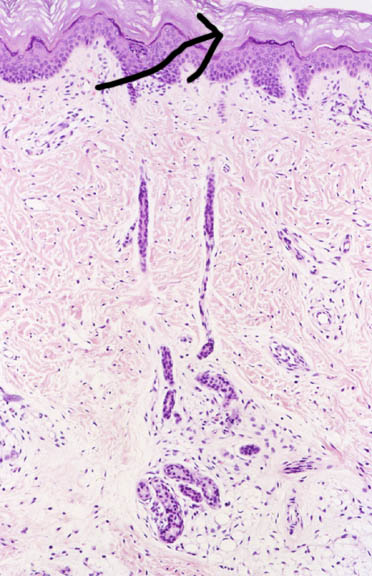Skin Lab Practice Exam - A&p

In this quiz, we’ll be putting you up against a gauntlet of skin-related questions from a histological standpoint, asking you to look at images and identify the different areas and tissues displayed. Think you know your stuff?
Questions and Answers
- 1.
Name the area or layer at the arrows.
Explanation
The given answer includes various terms that refer to the same area or layer of the skin. The term "papilla" refers to a small projection or bump, while "dermal papilla" specifically refers to the papilla found in the dermis layer of the skin. "Papillae" is the plural form of papilla, and "dermal papillae" refers to multiple papillae in the dermis. Finally, "dermal papillary layer" is another term for the layer of the dermis that contains the dermal papillae.Rate this question:
- 2.
What is this tissue on the slide?
Explanation
The correct answer is dermis, dermal layer. The tissue on the slide is most likely the dermis because it is the layer of skin located beneath the epidermis. The dermis is composed of connective tissue and contains blood vessels, nerves, hair follicles, and sweat glands. It provides support and elasticity to the skin and helps regulate body temperature. Therefore, based on the given options, dermis and dermal layer are the most appropriate descriptions for the tissue on the slide.Rate this question:
- 3.
Name the structure.
Explanation
The correct answer is "eccrine gland." An eccrine gland is a type of sweat gland found in the skin of mammals. These glands are responsible for producing sweat, which helps regulate body temperature. Eccrine glands are most abundant on the palms of the hands, soles of the feet, and forehead. They secrete sweat directly onto the surface of the skin through sweat ducts. This sweat is mostly composed of water, salt, and other electrolytes. Eccrine glands play a crucial role in thermoregulation and are important for cooling down the body during physical exertion or in hot environments.Rate this question:
- 4.
What is this layer of tissue on the slide?
Explanation
The layer of tissue on the slide is the epidermis. The epidermis is the outermost layer of the skin, which acts as a protective barrier against external factors such as bacteria and UV radiation. It is composed of multiple layers of cells, including keratinocytes, melanocytes, and Langerhans cells. The epidermis also contains structures like hair follicles, sweat glands, and sebaceous glands.Rate this question:
- 5.
Name this structure in this tissue.
Explanation
A hair follicle is a structure found in the skin that produces and houses hair. It is composed of multiple layers, including the outer root sheath and inner root sheath, which surround the hair shaft. The hair follicle is responsible for the growth and maintenance of the hair, as well as its pigmentation. It also contains sebaceous glands, which produce sebum to lubricate the hair and skin.Rate this question:
- 6.
- 7.
Name the structure at the arrow in this slide.
Explanation
The structure at the arrow in the slide is a Pacinian corpuscle.Rate this question:
- 8.
Name the structure at the arrow.
Explanation
The structure at the arrow is a sebaceous gland. Sebaceous glands are small glands in the skin that produce and secrete an oily substance called sebum. They are typically associated with hair follicles and help moisturize the skin and hair. Sebaceous glands are most abundant on the face and scalp but can be found throughout the body. They play a crucial role in maintaining the health and hydration of the skin.Rate this question:
- 9.
Name this layer of epidermis.
Explanation
The stratum corneum is the outermost layer of the epidermis, consisting of dead skin cells that are constantly being shed and replaced. This layer acts as a protective barrier, preventing water loss and protecting the underlying layers from external damage. It also helps to regulate the skin's hydration and acts as a defense against pathogens.Rate this question:
Quiz Review Timeline +
Our quizzes are rigorously reviewed, monitored and continuously updated by our expert board to maintain accuracy, relevance, and timeliness.
-
Current Version
-
Mar 20, 2023Quiz Edited by
ProProfs Editorial Team -
Oct 04, 2009Quiz Created by
Shelleyr
 Back to top
Back to top



